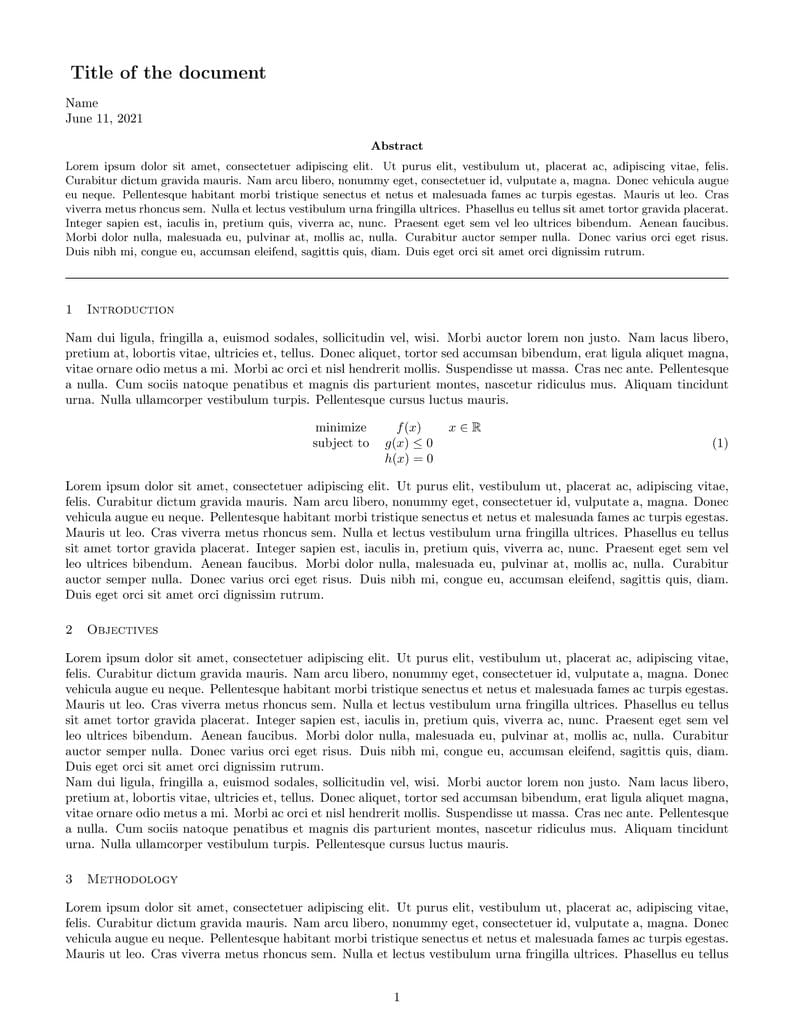
Paper template
Autor:
Jenna Iori
Letzte Aktualisierung:
vor 5 Jahren
Lizenz:
Creative Commons CC BY 4.0
Abstrakt:
This is a template for a paper or report.

\begin
Discover why over 20 million people worldwide trust Overleaf with their work.

\begin
Discover why over 20 million people worldwide trust Overleaf with their work.
\documentclass[fontsize=10pt]{article}
\usepackage[margin=0.70in]{geometry}
\usepackage{lipsum,mwe,abstract}
\usepackage[T1]{fontenc}
\usepackage[english]{babel}
\usepackage{fancyhdr} % Custom headers and footers
%\pagestyle{fancyplain} % Makes all pages in the document conform to the custom headers and footers
%\fancyhead{}
%\fancyfoot[C]{\thepage} % Page numbering for right footer
\usepackage{lipsum}
\setlength\parindent{0pt}
\usepackage{amsmath,amsfonts,amsthm} % Math packages
\usepackage{wrapfig}
\usepackage{graphicx}
\usepackage{float}
\usepackage{subcaption}
\usepackage{comment}
\usepackage{enumitem}
\usepackage{cuted}
\usepackage{sectsty} % Allows customizing section commands
\allsectionsfont{\normalfont \normalsize \scshape} % Section names in small caps and normal fonts
\renewenvironment{abstract} % Change how the abstract look to remove margins
{\small
\begin{center}
\bfseries \abstractname\vspace{-.5em}\vspace{0pt}
\end{center}
\list{}{%
\setlength{\leftmargin}{0mm}
\setlength{\rightmargin}{\leftmargin}%
}
\item\relax}
{\endlist}
\makeatletter
\renewcommand{\maketitle}{\bgroup\setlength{\parindent}{0pt} % Change how the title looks like
\begin{flushleft}
\textbf{\@title}
\@author \\
\@date
\end{flushleft}\egroup
}
\makeatother
%% -------------------------------------------------------------------
\title{
\Large Title of the document \\
[10pt]
}
\date{\today}
\author{Name}
\begin{document}
\maketitle
% --------------- ABSTRACT
\begin{abstract}
\lipsum[1]
\end{abstract}
\rule{\linewidth}{0.5pt}
% --------------- MAIN CONTENT
\section{Introduction}
\lipsum[2]
\begin{equation} % Example of optimization equation
\begin{tabular}{c c c}
minimize & $f(x)$ & $x \in \mathbb{R} $\\
subject to & $g(x)\leq 0 $& \\
& $h(x) = 0$& \\
\end{tabular}
\end{equation}
\lipsum[1]
\section{Objectives}
\lipsum[1-2]
\section{Methodology}
\lipsum[1-2]
\section{Results}
\lipsum[1-2]
\section{Conclusion}
\lipsum [4-5]
\begin{thebibliography}{}
\bibitem{Ref1}{First reference}
\bibitem{Ref2}{Second reference}
\bibitem{Ref3}{Third reference}
\end{thebibliography}
\end{document}